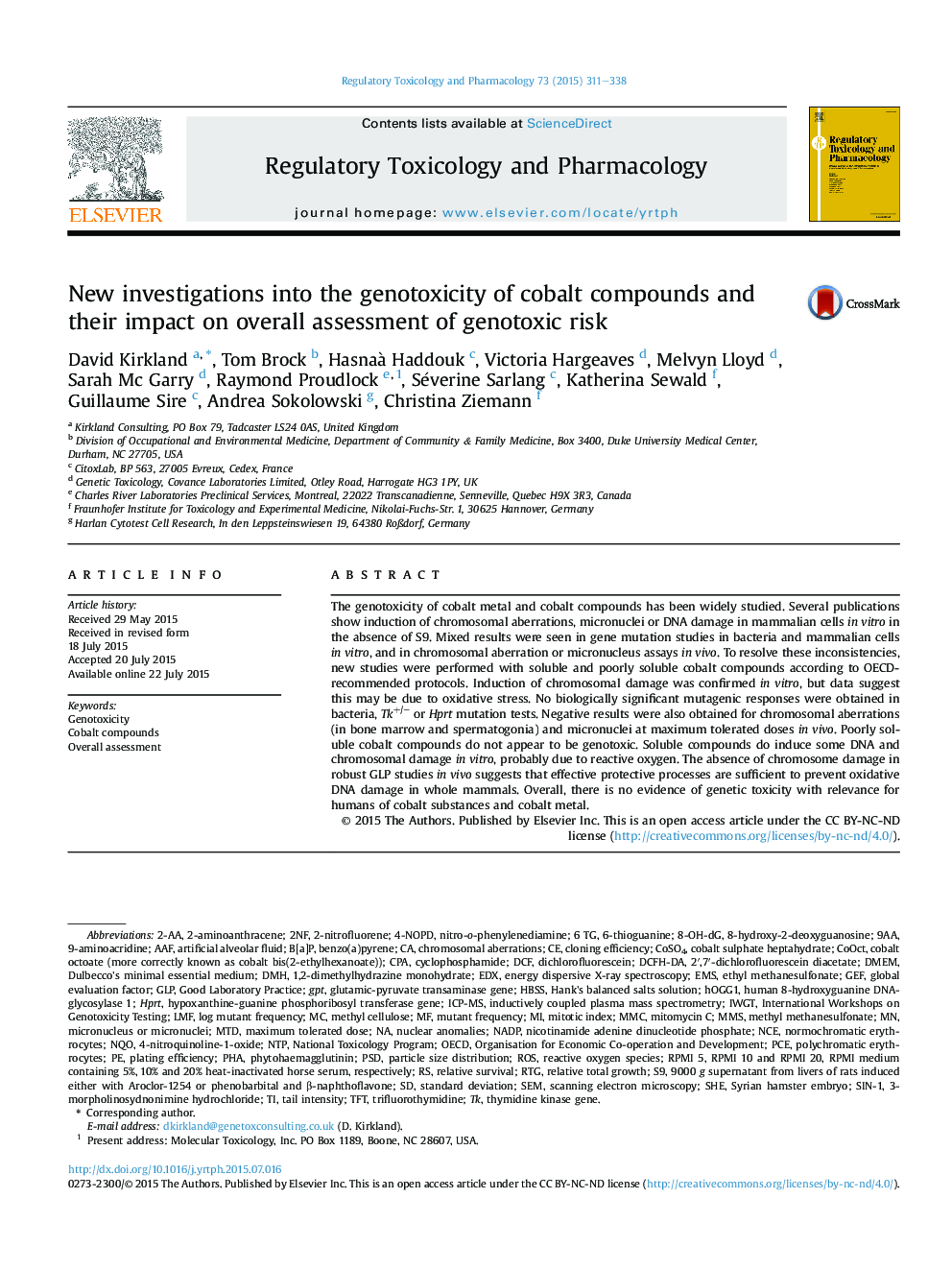| Article ID | Journal | Published Year | Pages | File Type |
|---|---|---|---|---|
| 5856337 | Regulatory Toxicology and Pharmacology | 2015 | 28 Pages |
Abstract
The genotoxicity of cobalt metal and cobalt compounds has been widely studied. Several publications show induction of chromosomal aberrations, micronuclei or DNA damage in mammalian cells in vitro in the absence of S9. Mixed results were seen in gene mutation studies in bacteria and mammalian cells in vitro, and in chromosomal aberration or micronucleus assays in vivo. To resolve these inconsistencies, new studies were performed with soluble and poorly soluble cobalt compounds according to OECD-recommended protocols. Induction of chromosomal damage was confirmed in vitro, but data suggest this may be due to oxidative stress. No biologically significant mutagenic responses were obtained in bacteria, Tk+/â or Hprt mutation tests. Negative results were also obtained for chromosomal aberrations (in bone marrow and spermatogonia) and micronuclei at maximum tolerated doses in vivo. Poorly soluble cobalt compounds do not appear to be genotoxic. Soluble compounds do induce some DNA and chromosomal damage in vitro, probably due to reactive oxygen. The absence of chromosome damage in robust GLP studies in vivo suggests that effective protective processes are sufficient to prevent oxidative DNA damage in whole mammals. Overall, there is no evidence of genetic toxicity with relevance for humans of cobalt substances and cobalt metal.
Keywords
Mitomycin CDCFH-DA2-aminoanthraceneNCEEMSOECDAAFdichlorofluoresceinMMS9AATFTMTDLMFHBSSRTGHprtGEFhOGG1GLP2NFPhytohaemagglutinin8-OH-dGIWGT6-thioguanineSIN-1CPADcfPHAPSDNADPNTPMMCEDXPCE4-NOPDDMEMNQONuclear anomaliesGPTDMH2′,7′-dichlorofluorescein diacetate2-AA2-nitrofluorene3-morpholinosydnonimine hydrochloride4-nitroquinoline-1-oxide8-Hydroxy-2-deoxyguanosine9-AminoacridineB[a]PROSTrifluorothymidineethyl methanesulfonateChromosomal aberrationspolychromatic erythrocytesnormochromatic erythrocytesEnergy Dispersive X-ray Spectroscopystandard deviationSHEcloning efficiencyNational Toxicology ProgramRelative survivalBenzo(a)pyreneCobalt compoundsGood Laboratory PracticeParticle size distributionSyrian hamster embryoDulbecco's minimal essential mediumMaximum tolerated doseHank's balanced salts solutionrelative total growthOrganisation for Economic Co-operation and DevelopmentMethyl celluloseGenotoxicityCyclophosphamidemitotic indexinductively coupled plasma mass spectrometryICP-MSMutant frequencymethyl methanesulfonateSEMScanning electron microscopymicronucleus or micronucleinicotinamide adenine dinucleotide phosphateThymidine kinase geneplating efficiencyReactive oxygen species
Related Topics
Life Sciences
Environmental Science
Health, Toxicology and Mutagenesis
Authors
David Kirkland, Tom Brock, Hasnaà Haddouk, Victoria Hargeaves, Melvyn Lloyd, Sarah Mc Garry, Raymond Proudlock, Séverine Sarlang, Katherina Sewald, Guillaume Sire, Andrea Sokolowski, Christina Ziemann,
